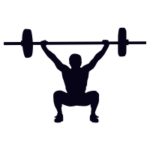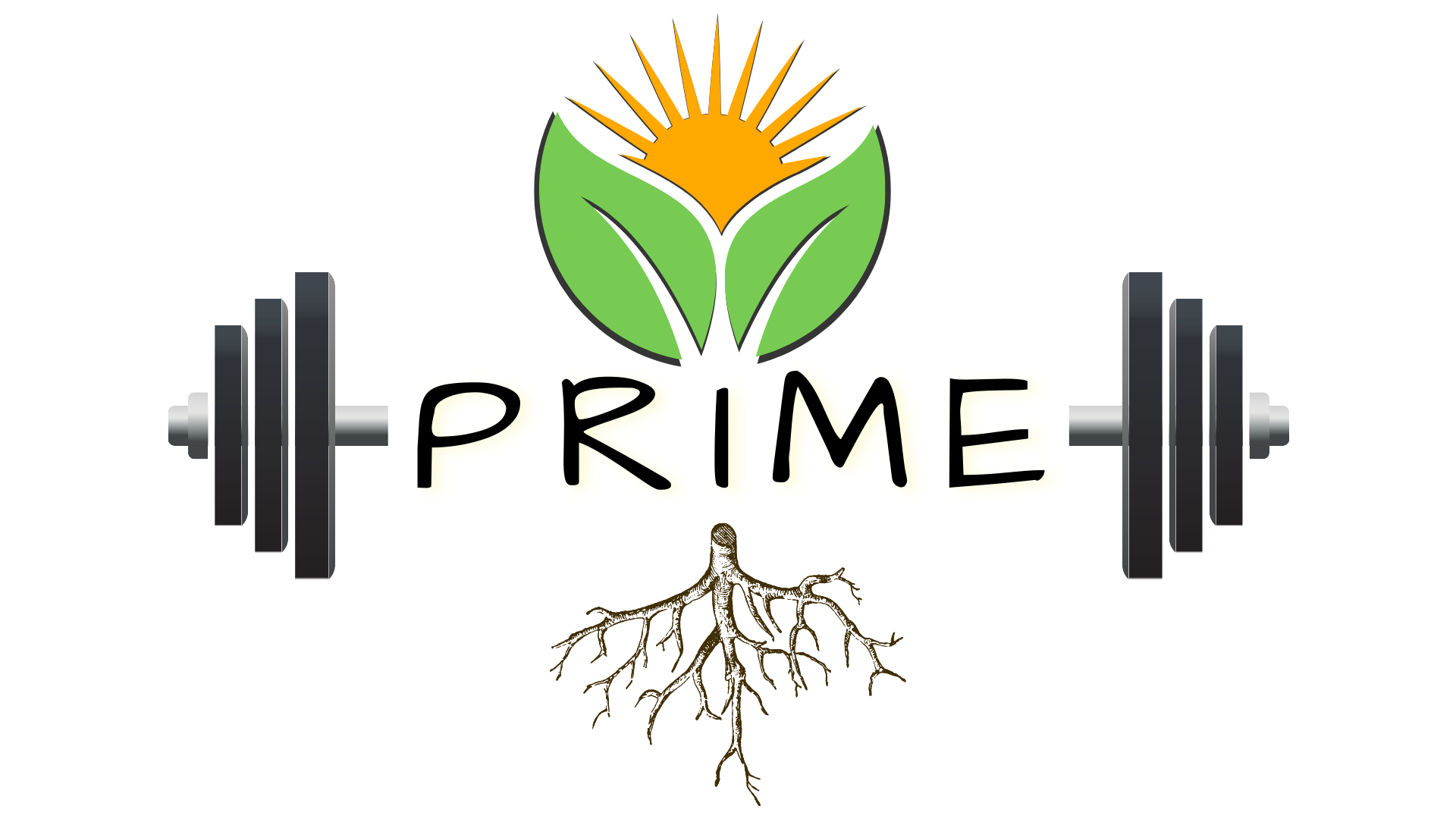When choosing between Full Body or Push Pull Legs, the short answer is that it depends on your goals. Full Body workouts are generally better suited for those who are newer to weight training, whose main goal is not necessarily maxing out muscle growth and strength. Those who follow Full Body routines typically want overall fitness benefits rather than pure muscle-building performance.
Push Pull Legs is popular among intermediate to advanced lifters who train more often, specifically for physique and bodybuilding. Keep reading to learn about some of the benefits and drawbacks of both training plans, as well as taking a look at an example “Hybrid Training Split” combining the two.
One way I like to think about deciding between PPL and Full Body: Push Pull Legs is more “logical”, Full Body goes by “feel”.
PPL or Full Body | What Difference Does it Make?
If you’ve been doing Push Pull Legs for an extended period of time, you know that every workout is pretty much determined already. There’s no complex order of exercises you need to remember, or creative ways of switching things up. It’s straight and to the point. Lift as heavy as you can for as many total sets as possible, then rest enough to recover before next time.
You pretty much cycle through the same handful of exercises in slightly different variations each time. In this way, there’s a very logical system to Push Pull Legs that makes it ideal for building muscle and strength.
Full Body workouts are a little bit trickier, since now you have more freedom to choose what exercises to do on any given day. This requires you to “feel” through the workout and decide how to handle each exercise. While you can choose to do the same exercises as you would for PPL, you need to manage the workout more closely.
You have to train every major muscle group on the same day, therefore decide how much volume and effort to put into each exercise. In other words, now you need to pick what exercises to do in what order.
Benefits of Push Pull Legs

You don’t need to practice “load management”, or manage the effort you put into each set, or hold back on hitting a muscle group until exhaustion.

Every workout is focused on muscle performance and maximum strength, allowing for optimal use of compound movements in grouping the right muscles together.

It’s easier to schedule PPL because of the constant rotation of workouts. You get more total volume from the workouts you schedule and more time to recover between each session.

As long as you follow the simple formula of exercises, you don’t need to worry about switching exercises up, or thinking about what muscle group to do next.
Full Body Might be Better For You If…
Lifting heavy is not that important to you. Maybe you’re not trying to go until failure on your sets. You would rather focus on improving endurance, doing high reps. Or you would rather lose weight than bulk up in size.
You only want to lift weights three days a week and you don’t want to train on consecutive days. Scheduling your workouts becomes a lot more flexible when doing Full Body, which appeals to many busy professionals who have limited time to spend working out.
You want to get better at playing sports or be more athletic. Functional strength is more important to you than maximum strength.
You’re still fairly new to lifting weights. By that, I mean in your first year of consistent weight training. This also applies if you took extended time off from the gym.
You’re willing to track your exercises and follow a plan rather than doing the same “boring” exercises each time.
Benefits of Full Body Workouts

Good to switch things up if you’re not used to doing Full Body. It’s more about endurance and cardio than getting a pump, or pure strength.

Physically challenges your overall fitness level and functional strength, not just muscle performance. More opportunities for cardio or active recovery days.

Flexibility to choose which exercises you perform during any given workout. Not limited by what exercises you can and can’t do.

As long as you include compound exercises and balance workload evenly, you can still build muscle and strength.
Push Pull Legs Might be Better If…
You’re more of an advanced weight lifter. By “advanced”, I simply mean at least a couple years of training without stopping.
You would rather train each muscle group with maximum effort each time. This is typically after your “newbie gains” have slowed down a little, so now you need more volume to achieve similar gains.
Building muscle mass and/or getting stronger is your primary goal. PPL groups exercises based on working muscle groups which means basic compound movements are combined with isolation exercises to target each muscle group fully.
You like working out on consecutive days (either two or three days in a row) before taking a rest day. Some people want to lift every day because they love it. Push Pull Legs allows you to lift more than three days a week with enough rest, therefore you can do more volume.
You don’t like to keep track of your exercises each time. Push Pull Legs is more simple to follow (it depends what you mean by simple), so you can always go as hard as you want without thinking too much about it.
How to Follow the Hybrid Full Body | Push Pull Legs Training Split
The solution for setting up an effective Full Body workout plan is to follow a system that rotates the exercises to target each muscle group equally. More specifically, you can combine the best of both training splits. The flexibility of a Full Body routine and the effectiveness of PPL. This is a Full Body | PPL Hybrid Split.
Every workout starts with either a Push, Pull or Legs exercise. Assuming you train 3x/week, you’re able to start each workout by targeting a different one of those muscle groups. In other words, the first workout you start with a Chest exercise. The next day you start with a Back exercise. Then on the third day, you start with Legs.
Full Body | Push Pull Legs Hybrid
| Monday Full Body | Push | Tuesday Rest Day | Wednesday Full Body | Pull | Thursday Rest Day | Friday Full Body | Legs | Saturday Rest Day | Sunday Rest Day |
|---|---|---|---|---|---|---|
| Warm-Up | - | Warm-Up | - | Warm-Up | - | - |
| Bench Press 3 sets 8-10 reps | - | Standing Barbell or DB Row 3 sets 8-10 reps | - | Bulgarian Split Squat 3 sets 10-12 reps (each leg) | - | - |
| Dumbbell Shoulder Press 3 sets 10-12 reps | - | Lat Pulldown Cable 3 sets 10-12 reps | - | Barbell Squat 3 sets 6-12 reps | - | - |
| Pull Ups 3 sets 3-12 reps (or until failure) | - | Goblet Squat with DB 3 sets 10-12 reps | - | DB Lateral Raises 3 sets 10-12 reps | - | - |
| Walking Lunges with DB 3 sets 12-15 reps (each leg walking) | - | DB Incline Press 3 sets 10-15 reps (or until failure) | - | Single Arm DB Row 3 sets 10-12 reps (each arm) | - | - |
| DB Chest Fly or Pec Deck 3 sets 10-15 reps (or until failure) | - | DB Shrugs 3 sets 10-12 reps (or until failure) | - | Leg Press Machine 4 sets (alternate high/low foot) 10-12 reps | - | - |
| Tricep Cable Extension 3 sets 10-15 reps (or until failure) | Bicep Curls 3 sets 12-15 reps (or until failure) | Calf Raises 3 sets 12-15 reps | ||||
| Cool-Down | Cool-Down | Cool-Down |
Monday, Wednesday and Friday workouts. Tuesday, Thursday, Saturday and Sunday rest days.
Simply place one or two rest days between each workout, depending on how many days you workout each week.
What to do for Warm Up and Cool Down
Warm-up and Cool-down can be whatever you want. For the sake of keeping it simple, the Warm-up can be whatever your first exercise is going to be, only reduce the weight by 50%. Do three Warm-up sets of anywhere from 10-20 reps at the lighter weight. Cool-down can be a combination of cardio, flexibility, dynamic stretching, or any form of active recovery.
When to do Core and Abdominal Exercises
One option for when to train your core and ab muscles is to do them during the Cool Down. Since many of your compound lifts will engage core as a secondary muscle group, it’s more efficient to place them at the end of the workout so you’re not pre-exhausting your abs before doing other exercises.
What About Full Body 4 Days a Week?
You can lift weights every other day, but this makes it four days a week, not three. This means you would do the next Full Body | Push workout on Sunday, rest on Monday, train on Tuesday, etc.
Here is what the second week of this plan would look like if you decided to train on Sunday and maintain the four day plan:
| Sunday Full Body | Push | Monday Rest | Tuesday Full Body | Pull | Wednesday Rest | Thursday Full Body | Legs | Friday Rest | Saturday Full Body | Push |
|---|---|---|---|---|---|---|
| Warm-Up | - | Warm-Up | - | Warm-Up | - | Warm-Up |
| Bench Press 3 sets 8-10 reps | - | Standing Barbell or DB Row 3 sets 8-10 reps | - | Bulgarian Split Squat 3 sets 10-12 reps (each leg) | - | Bench Press 3 sets 8-10 reps |
| Dumbbell Shoulder Press 3 sets 10-12 reps | - | Lat Pulldown Cable 3 sets 10-12 reps | - | Barbell Squat 3 sets 6-12 reps | - | Dumbbell Shoulder Press 3 sets 10-12 reps |
| Pull Ups 3 sets 3-12 reps (or until failure) | - | Goblet Squat with DB 3 sets 10-12 reps | - | DB Lateral Raises 3 sets 10-12 reps | - | Pull Ups 3 sets 3-12 reps (or until failure) |
| Walking Lunges with DB 3 sets 12-15 reps (each leg walking) | - | DB Incline Press 3 sets 10-15 reps (or until failure) | - | Single Arm DB Row 3 sets 10-12 reps (each arm) | - | Walking Lunges with DB 3 sets 12-15 reps (each leg walking) |
| DB Chest Fly or Pec Deck 3 sets 10-15 reps (or until failure) | - | DB Shrugs 3 sets 10-12 reps (or until failure) | - | Leg Press Machine 4 sets (alternate high/low foot) 10-12 reps | - | DB Chest Fly or Pec Deck 3 sets 10-15 reps (or until failure) |
| Tricep Cable Extension 3 sets 10-15 reps (or until failure) | - | Bicep Curls 3 sets 12-15 reps (or until failure) | - | Calf Raises 3 sets 12-15 reps | - | Tricep Cable Extension 3 sets 10-15 reps (or until failure) |
| Cool-Down | - | Cool-Down | - | Cool-Down | - | Cool-Down |
The 4 day schedule for this is okay, not great. I personally prefer to do PPL if I’m lifting weights four days a week or more.
Opinion: Full Body workouts are better for working out three days a week. Push Pull Legs is better at four days a week, or more.
You can learn how to schedule a simple 4 and 5 day Push Pull Legs workout plan here.
How Focus Muscle Groups are used
Focus Muscle Groups are a way of tracking which muscles are targeted the most and prioritized within a workout so that you can spread the workload evenly across all the major muscle groups. Keeping track of Focus Muscle Groups leads to fewer muscle imbalances and a more well-rounded physique. Here are the Focus Muscle Groups broken down into specific muscles:
Push Day Focus Muscles
Chest | Shoulders | Triceps
Pull Day Focus Muscles
Back | Biceps | Trapezius | Rear Delts
Leg Day Focus Muscles
Quads | Hamstrings | Glutes | Calves
Why Combine Full Body and PPL into a Hybrid Split?
One thing I’ve noticed about Full Body workouts is that, when I go hard on my first few exercises, I start feeling fatigue so the next few exercises I don’t go as hard. For this reason, it’s good to track not just what exercises you choose, but also the order in which you do them.
Always beginning your Full Body workouts with the same exercises will lead to becoming dominant in that movement, which could lead to imbalances over time. Tracking Focus Muscle Groups allows you to rotate between the exercises in a balanced way to stimulate the same amount of growth all over.
Since compound exercises group the Push | Pull | Legs muscles together, you can use the foundations of PPL and mix it with Full Body to get the benefits of both.
Full Body | PPL Hybrid - Focus Muscles
| Monday Full Body | Push | Tuesday Rest Day | Wednesday Full Body | Pull | Thursday Rest Day | Friday Full Body | Legs | Saturday Rest Day | Sunday Rest Day |
|---|---|---|---|---|---|---|
| Warm-Up | - | Warm-Up | - | Warm-Up | - | - |
| Bench Press 3 sets 8-10 reps | - | Standing Barbell or DB Row 3 sets 8-10 reps | - | Bulgarian Split Squat 3 sets 10-12 reps (each leg) | - | - |
| Dumbbell Shoulder Press 3 sets 10-12 reps | - | Lat Pulldown Cable 3 sets 10-12 reps | - | Barbell Squat 3 sets 6-12 reps | - | - |
| Pull Ups 3 sets 3-12 reps (or until failure) | - | Goblet Squat with DB 3 sets 10-12 reps | - | DB Lateral Raises 3 sets 10-12 reps | - | - |
| Walking Lunges with DB 3 sets 12-15 reps (each leg walking) | - | DB Incline Press 3 sets 10-15 reps (or until failure) | - | Single Arm DB Row 3 sets 10-12 reps (each arm) | - | - |
| DB Chest Fly or Pec Deck 3 sets 10-15 reps (or until failure) | - | DB Shrugs 3 sets 10-12 reps (or until failure) | - | Leg Press Machine 4 sets (alternate high/low foot) 10-12 reps | - | - |
| Tricep Cable Extension 3 sets 10-15 reps (or until failure) | Bicep Curls 3 sets 12-15 reps (or until failure) | Calf Raises 3 sets 12-15 reps | ||||
| Cool-Down | Cool-Down | Cool-Down |
Notice there are three exercises at the start of the workout and also three exercises at the end of the workout. These are the highlighted exercises each day that target the Focus Muscle Group.
These Focus Exercises target the same muscle group depending on if it’s a Push, Pull, or Legs Focus. This is important because you have more energy at the start of the workout, which means you put more effort into those sets, which will stimulate more growth for that muscle group.
Similar thing could also be said about ending your workout doing Focus Muscle Exercises. This is when you’re going until failure and trying to burn out the last remaining energy you have.
At the end of the workout, this is when you can use Isolation Exercises to finish off the Focus Muscle Group, creating a different stimulus for growth.
Rather than doing random exercises for Full Body, you’re tracking a different Focus Muscle Group each day while maintaining a consistent rotation of exercises.
Full Body | PPL Hybrid - Middle Exercises
| Monday Full Body | Push | Tuesday Rest Day | Wednesday Full Body | Pull | Thursday Rest Day | Friday Full Body | Legs | Saturday Rest Day | Sunday Rest Day |
|---|---|---|---|---|---|---|
| Warm-Up | - | Warm-Up | - | Warm-Up | - | - |
| Bench Press 3 sets 8-10 reps | - | Standing Barbell or DB Row 3 sets 8-10 reps | - | Bulgarian Split Squat 3 sets 10-12 reps (each leg) | - | - |
| Dumbbell Shoulder Press 3 sets 10-12 reps | - | Lat Pulldown Cable 3 sets 10-12 reps | - | Barbell Squat 3 sets 6-12 reps | - | - |
| Pull Ups 3 sets 3-12 reps (or until failure) | - | Goblet Squat with DB 3 sets 10-12 reps | - | DB Lateral Raises 3 sets 10-12 reps | - | - |
| Walking Lunges with DB 3 sets 12-15 reps (each leg walking) | - | DB Incline Press 3 sets 10-15 reps (or until failure) | - | Single Arm DB Row 3 sets 10-12 reps (each arm) | - | - |
| DB Chest Fly or Pec Deck 3 sets 10-15 reps (or until failure) | - | DB Shrugs 3 sets 10-12 reps (or until failure) | - | Leg Press Machine 4 sets (alternate high/low foot) 10-12 reps | - | - |
| Tricep Cable Extension 3 sets 10-15 reps (or until failure) | Bicep Curls 3 sets 12-15 reps (or until failure) | Calf Raises 3 sets 12-15 reps | ||||
| Cool-Down | Cool-Down | Cool-Down |
Now the highlighted cells are the middle two exercises on each day. This is how to track the exercises that are not the Focus Muscle Groups.
On Monday, one exercise is for Back/Biceps (Pull) and one exercise is for Quads/Hamstrings/Glutes/Calves (Legs). The rotation of exercises remains consistent each day. That means it follows the same sequence: Push – Pull – Legs.
On Monday, the Focus Muscle Group is “Push”, therefore the two exercises that come after: Back/Biceps (Pull Focus) then Quads/Hamstrings/Glutes/Calves (Legs Focus).
On Wednesday, the Focus Muscle Group is Back and Biceps, so you begin the workout with those three exercises. Then to keep the rotation consistent, the two exercises after should be Legs + Push.
Friday is the same thing. Start with Leg exercises for the first three. After that is Push, then Pull.
Full Body | PPL Hybrid - All Exercises
| Monday Full Body | Push | Tuesday Rest Day | Wednesday Full Body | Pull | Thursday Rest Day | Friday Full Body | Legs | Saturday Rest Day | Sunday Rest Day |
|---|---|---|---|---|---|---|
| Warm-Up | - | Warm-Up | - | Warm-Up | - | - |
| Bench Press 3 sets 8-10 reps | - | Standing Barbell or DB Row 3 sets 8-10 reps | - | Bulgarian Split Squat 3 sets 10-12 reps (each leg) | - | - |
| Dumbbell Shoulder Press 3 sets 10-12 reps | - | Lat Pulldown Cable 3 sets 10-12 reps | - | Barbell Squat 3 sets 6-12 reps | - | - |
| Pull Ups 3 sets 3-12 reps (or until failure) | - | Goblet Squat with DB 3 sets 10-12 reps | - | DB Lateral Raises 3 sets 10-12 reps | - | - |
| Walking Lunges with DB 3 sets 12-15 reps (each leg walking) | - | DB Incline Press 3 sets 10-15 reps (or until failure) | - | Single Arm DB Row 3 sets 10-12 reps (each arm) | - | - |
| DB Chest Fly or Pec Deck 3 sets 10-15 reps (or until failure) | - | DB Shrugs 3 sets 10-12 reps (or until failure) | - | Leg Press Machine 4 sets (alternate high/low foot) 10-12 reps | - | - |
| Tricep Cable Extension 3 sets 10-15 reps (or until failure) | Bicep Curls 3 sets 12-15 reps (or until failure) | Calf Raises 3 sets 12-15 reps | ||||
| Cool-Down | Cool-Down | Cool-Down |
Now when you put the colors together, you see how it’s a mix between Full Body and pure PPL. This plan allows you to work each muscle group for every workout, while at the same time getting the benefits of the Push Pull Legs structure.
Although technically you’re targeting full body each time by virtue of exercises #4 and 5, the focus of your workouts are the first three and last three exercises each day. That makes this a Push Pull Legs “hybrid”, since the focus muscle groups follow the PPL structure.
You’re able to train each muscle effectively without targeting any one muscle group harder than the other. This allows you to manage the load effectively between muscle groups, ensuring the right muscles are ready for each workout session which means you can achieve a more balanced physique.
Conclusion
Part of why I prefer Push Pull Legs to Full Body is how long I’ve been doing PPL, so I’ll admit I’m a bit biased. I think PPL is more effective for some and Full Body is a better fit for others. With PPL, you’re essentially doing the same handful of exercises every time, depending on what day it is. It’s not as straightforward under a Full Body plan, where you can do any exercise at any time. By combining the flexibility of a Full Body routine to the structure of Push Pull Legs, you can use Focus Muscle Groups to maintain a consistent rotation of exercises and spread the work evenly across all the muscle groups.

Comments are closed.